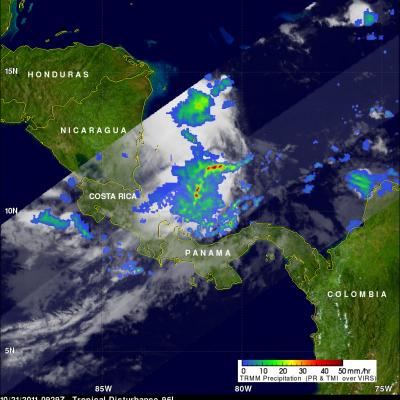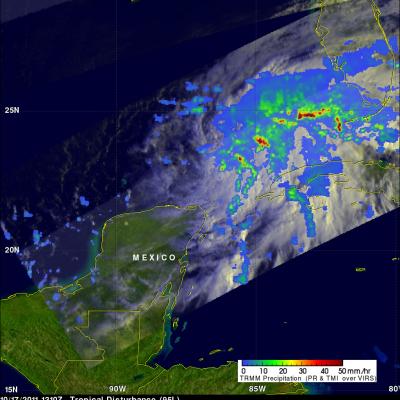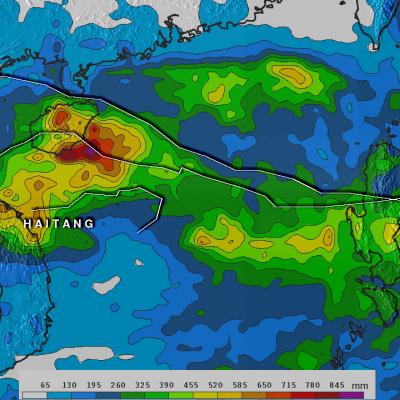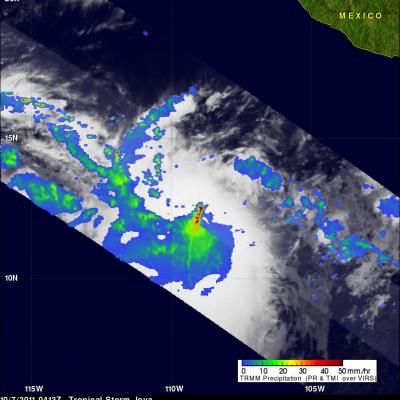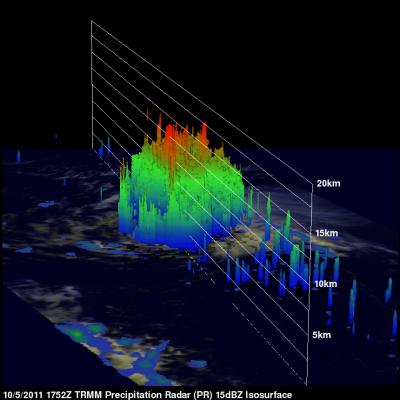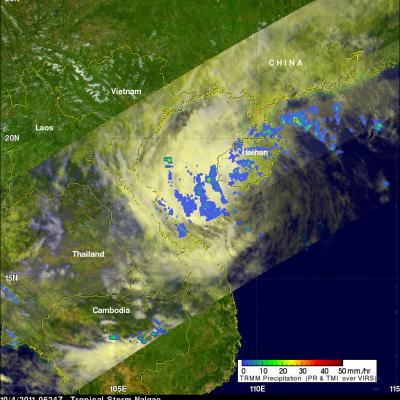Potential Tropical Cyclone Development In The Caribbean
The TRMM satellite passed over an area of disturbed weather in the southern Caribbean Sea between Nicaragua and Jamaica on 21 October 2011 at 0929 UTC. The National Hurricane Center (NHC) has given this area a high chance (60%) of becoming a tropical cyclone over the weekend. Data from TRMM's Precipitation Radar (PR) instrument were used to make the 3-D image above that shows that a cluster of strong convective storms in the southern part of this area were higher than 15 km (~9.3 miles). The heavy rainfall in this area of deep convection releases heat, known as latent heating, into these


